This month in the Mara, Mara Elephant Project experienced localized rainstorms, which means the Mara is wonderfully green and there is a lot of grass for both the wildlife and the Maasai cattle. However, it’s made patrolling certain areas of operations all that more difficult. Loita had exceptionally hard rains which made it challenging for our rangers to get in and out of the northern base.
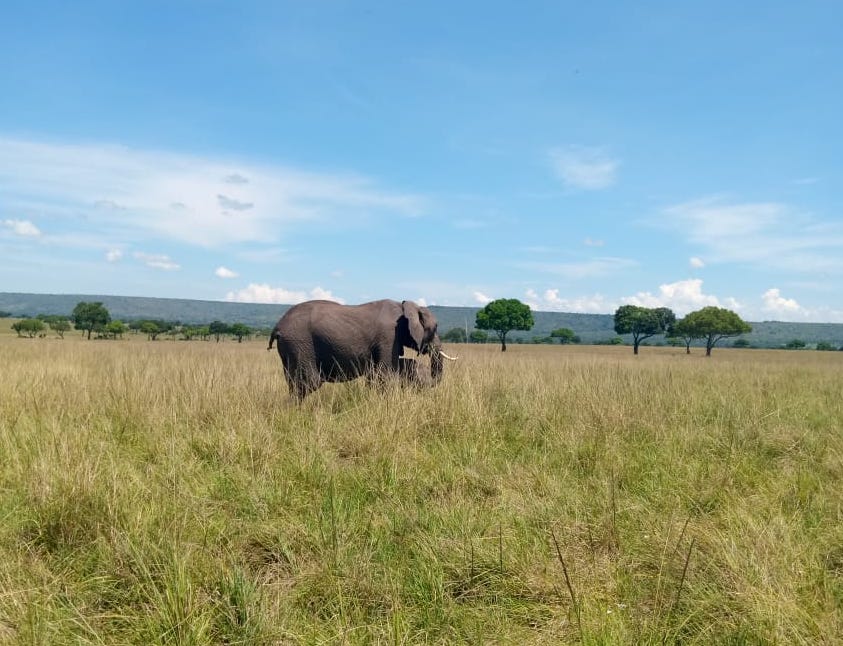
Long green grass photographed by the MEP LTM team in April.
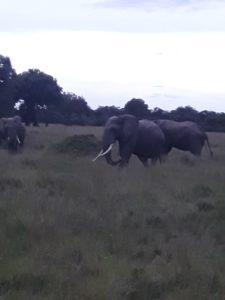 On April 22, MEP CEO Marc Goss was called in by MEP rangers on the ground to assist them in moving a herd of elephants out of the Ilkirin area near Loita with the leased helicopter (pictured left). The ranger unit on the ground had been pushing this heard away from farms and homes for two days in thick bush, but they ran out of firecrackers and were not making up enough ground. Once the helicopter was there to assist the team from the air, the elephants were safely moved away from community land and rangers were tasked with keeping a close eye on them and ensuring the community was safe. There were five total conflict incidents during April.
On April 22, MEP CEO Marc Goss was called in by MEP rangers on the ground to assist them in moving a herd of elephants out of the Ilkirin area near Loita with the leased helicopter (pictured left). The ranger unit on the ground had been pushing this heard away from farms and homes for two days in thick bush, but they ran out of firecrackers and were not making up enough ground. Once the helicopter was there to assist the team from the air, the elephants were safely moved away from community land and rangers were tasked with keeping a close eye on them and ensuring the community was safe. There were five total conflict incidents during April.
On April 15, the MEP “Alpha” ranger unit stationed in the Nyakweri Forest were dealing with collared elephant Fitz and his herd crop raiding at night. They were able to successfully use firecrackers to move his herd of 60 back into the forest and protect the community’s farms.
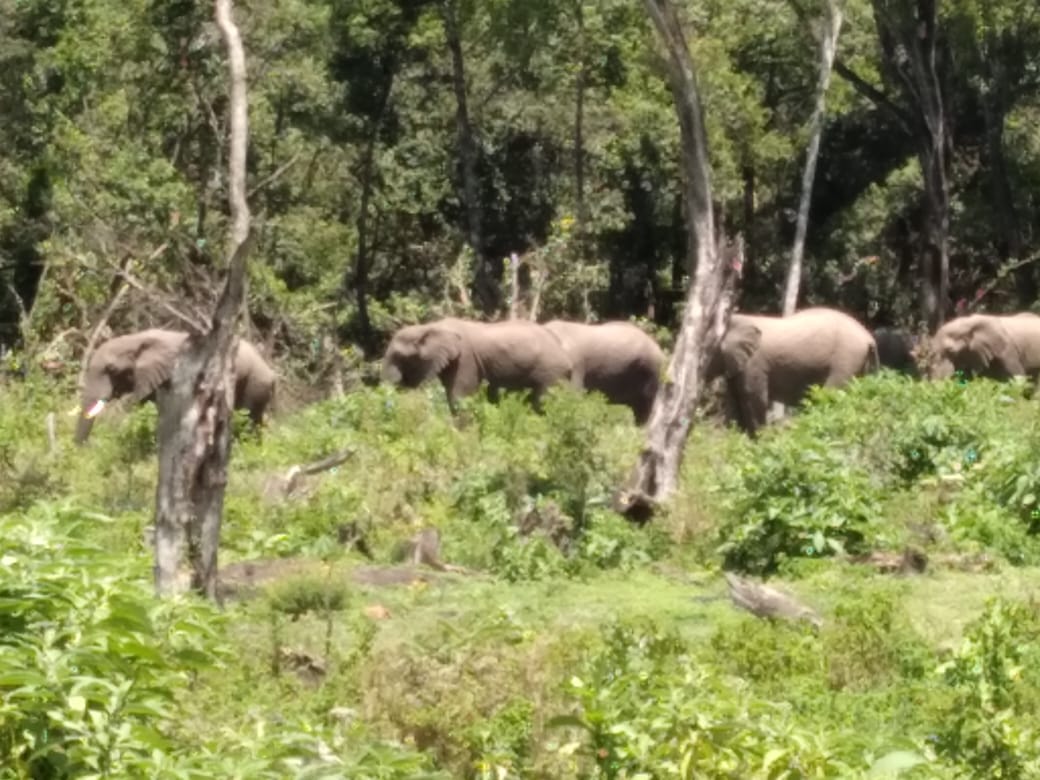
Fitz photographed with his herd in April.
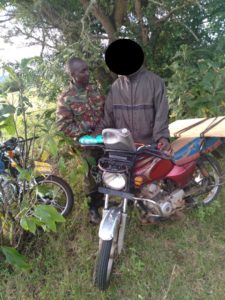 On April 3, the MEP “Foxtrot” ranger unit stationed in Loita Forest, received intelligence that illegal logging was taking place in their area of patrol. Once upon the scene they discovered one suspect with a chainsaw making timbers from trees in the protected forest and carting them out with his motorbike (pictured left). They successfully arrested this suspect and confiscated the timbers and chainsaw. In total, in April, MEP rangers alongside government partners arrested 17 habitat destruction suspects, destroyed 14 kilns, confiscated 10 sacks of charcoal, two power saws, four illegally felled trees, 276 posts and 33 timbers.
On April 3, the MEP “Foxtrot” ranger unit stationed in Loita Forest, received intelligence that illegal logging was taking place in their area of patrol. Once upon the scene they discovered one suspect with a chainsaw making timbers from trees in the protected forest and carting them out with his motorbike (pictured left). They successfully arrested this suspect and confiscated the timbers and chainsaw. In total, in April, MEP rangers alongside government partners arrested 17 habitat destruction suspects, destroyed 14 kilns, confiscated 10 sacks of charcoal, two power saws, four illegally felled trees, 276 posts and 33 timbers.

Timbers from the bust in Loita.
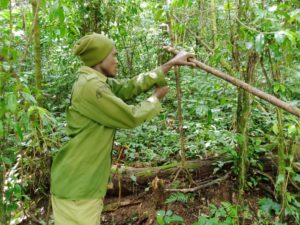 On April 19, the MEP / Sheldrick Wildlife Trust (SWT) Mau De-Snaring Unit, the “Golf” team, removed 20 bushmeat snares in their area of patrol (pictured left). A week later, while patrolling in the Mau Forest, they removed an additional 31 snares. That’s over 50 snares in one week removed from a key forest area of the Greater Mara Ecosystem. In total, in April, MEP rangers alongside government partners arrested one bushmeat poaching suspect, confiscated 5 kg of bushmeat and removed 53 snares.
On April 19, the MEP / Sheldrick Wildlife Trust (SWT) Mau De-Snaring Unit, the “Golf” team, removed 20 bushmeat snares in their area of patrol (pictured left). A week later, while patrolling in the Mau Forest, they removed an additional 31 snares. That’s over 50 snares in one week removed from a key forest area of the Greater Mara Ecosystem. In total, in April, MEP rangers alongside government partners arrested one bushmeat poaching suspect, confiscated 5 kg of bushmeat and removed 53 snares.
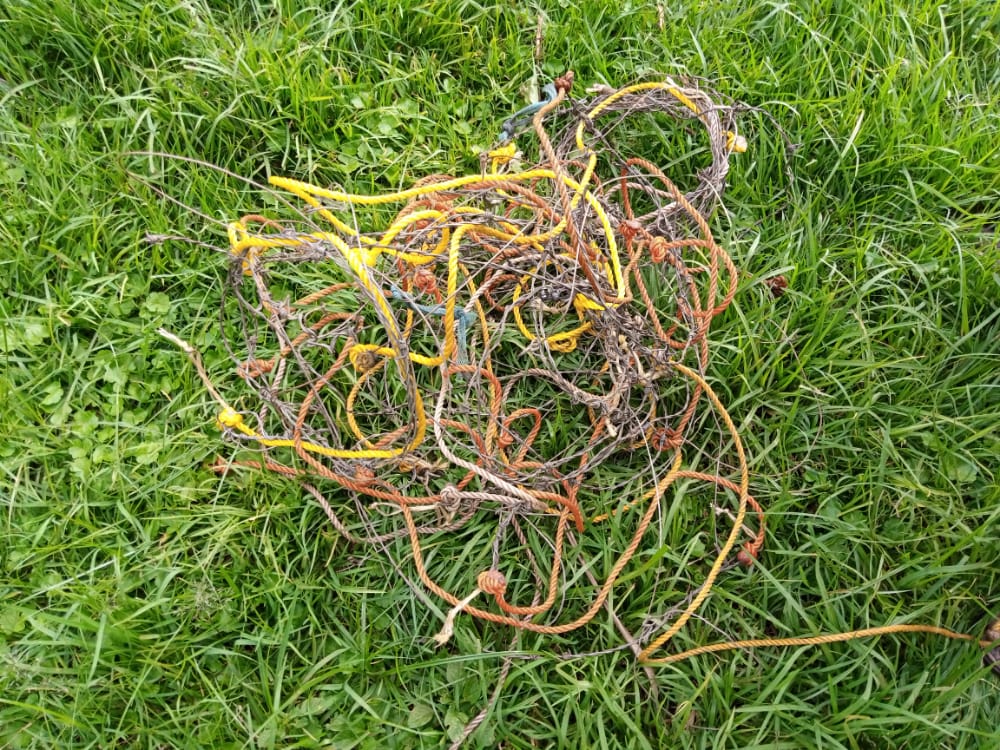
Snares removed in the Mau Forest.
The newly launched MEP long-term monitoring (LTM) team have already found injured elephants in need of treatment. On April 14, MEP rangers alongside Kenya Wildlife Service Vet Dr. Limo from the SWT Mara Mobile Vet Unit successfully treated a bull elephant with an arrow wound. The elephant was observed by the MEP LTM team in Mara North Conservancy (MNC) and the wound was noted on his side, a dangerous spot that needs immediate attention. This elephant was most likely crop raiding in nearby farms across the Mara River from MNC and was chased out using arrows by the community who are frustrated with often crop raids.

The bull elephant treatment on April 14.
We participated in another treatment on April 21 when a mother elephant was seen with a spear lodged in her left ear. Yet again, the quick and successful treatment of this mother was a result of MEP’s LTM team who spotted the wounded elephant while collecting data on elephants in MNC. Once again Dr. Limo was called in and the MEP leased helicopter was needed to flush this female away from her herd that were located inside a thick area of brush. We also needed extra MEP rangers on the ground to keep her calf safe and away from its mother while she was being treated. It was truly a team effort. The female most likely received her injury while crop raiding in farms that border the conservancy. Luckily, the mother’s treatment went well, and she and her baby are back with their herd and will continue to be monitored by the MEP LTM team.
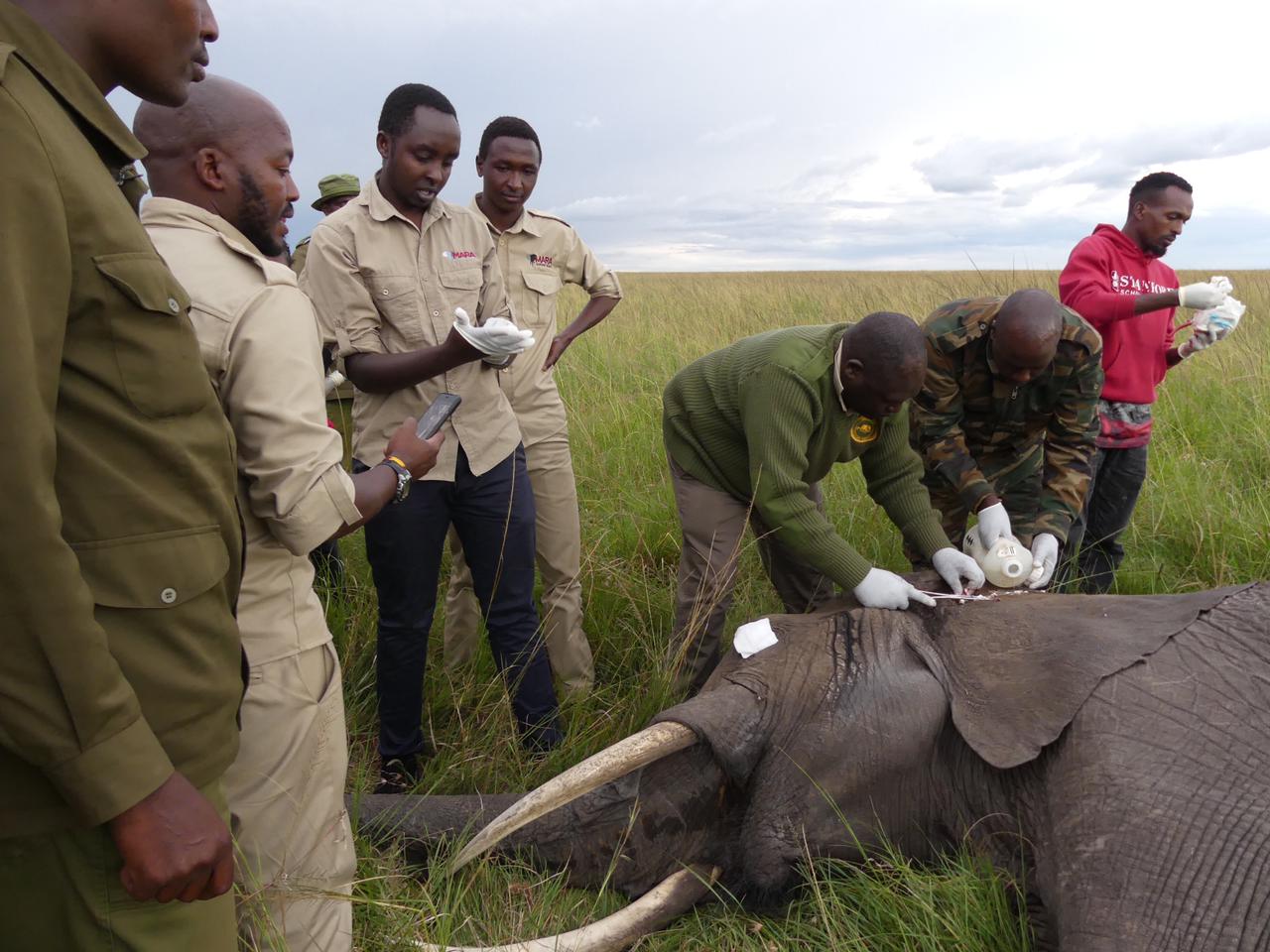
The mother elephant being treated by Dr. Limo.
The LTM team have also taken some spectacular photos of elephants and other wildlife living in the conservancies. They’ve made great strides in documenting individuals around Mara North and Lemek conservancies and have photographed and logged 115 individuals now out of the estimated 2,500 individuals frequenting the Greater Mara Ecosystem. They’re also tagging each individual with a ‘SEEK’ (System for Elephant Ear Knowledge) code that helps us to re-identify individual elephants using a methodology published by colleagues from Elephants Alive in South Africa in 2020. Data is uploaded in our bespoke ‘ElephantBook’ system we’ve been developing in collaboration with students from Caltech.

A photo taken by an LTM team member on April 29.
As this team starts venturing further afield it will be interesting to see what they find. The research and conservation department has grown substantially in the last year and some important projects are starting to mature including the fence line mapping. The team mapped another 209 kilometres of fencing and revisited some previous sites we had mapped last year but where more fences have been built. They also mapped 118 land-cover points that are helping us to run a classification of Sentinel-2 imagery useful in our understanding of elephant movements.
MEP Monthly Report April 2021
On April 1, MEP’s Director of Research & Conservation Dr. Jake Wall’s paper “Human Footprint and Protected Areas Shape Elephant Range Across Africa” was published in the journal Current Biology. The study, done in collaboration with Save the Elephants, Wildlife Conservation Society, Oxford University, Elephants Alive, and Colorado State University, was to examine the range sizes of 229 GPS tracked elephants across the continent at two temporal scales and analyze the effects of covariates on the areas occupied by elephants including samples from both species (savannah & forest). We found that at annual periods, it was mainly the human footprint and the presence of a protected areas that determined the elephant’s home-range size (although sex and species were also important). We were able to use Google’s Earth Engine technology to scale the analysis across the continent and found that 62% of the 29 million square kilometres of the continent are potentially still habitable by elephants including range that Pliny the Elder once reported the presence of elephants in North Africa. Although they live in only 17% of the habitable range currently and probably because of their suppression by poaching and hunting, there is still hope that there’s still space for humans and elephants.
“A healthy dose of wildlife irredentism along with a broader philosophical transition towards living with and among wildlife as part of the ecosystem will be necessary to secure a future for elephants and nature in general.” Dr. Jake Wall
Dr Wall’s paper received several key media mentions for the organization as well increasing our brand awareness within a new circle of potential supporters:
Life & Physical Sciences Reporter, Academic Times
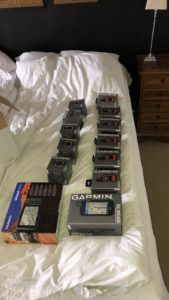 MEP recently received a donation of Garmin devices (pictured left) from Garmin Denmark, which play an essential part of MEP’s operations and allow our rangers to focus on protecting wildlife, communities and habitat in the GME. We rely heavily on a variety of Garmin products to ensure our rangers are fully equipped to make them safer and more efficient in the field. Garmin is the leader in GPS navigation and wearable technology that are engineered on the inside for life on the outside. Each MEP ranger unit is equipped with a Garmin inReach mini, which is a small lightweight satellite communicator that allows them to relay important information back to MEP HQ. It works completely off the grid, which is great for our ranger units stationed deep inside forested areas like the Mau or Loita. This device also has location tracking, and coordinates of each of our ranger units is relayed regularly and can be seen in real-time on an interactive map located at HQ or using Garmin’s Montana 700i or GPSMAP 276Cx devices remotely. Garmin’s quatix watch is also worn by MEP rangers while in the field to easily record a GPS log of their location and mark locations, such as an illegal logging site, for reference in the future. These watches also allow rangers to leave a “bread crumb” trail while patrolling in densely forested areas, so they won’t get lost or separated. The watch is also worn by CEO Marc Goss while piloting the MEP helicopter. Thank you for this generous donation.
MEP recently received a donation of Garmin devices (pictured left) from Garmin Denmark, which play an essential part of MEP’s operations and allow our rangers to focus on protecting wildlife, communities and habitat in the GME. We rely heavily on a variety of Garmin products to ensure our rangers are fully equipped to make them safer and more efficient in the field. Garmin is the leader in GPS navigation and wearable technology that are engineered on the inside for life on the outside. Each MEP ranger unit is equipped with a Garmin inReach mini, which is a small lightweight satellite communicator that allows them to relay important information back to MEP HQ. It works completely off the grid, which is great for our ranger units stationed deep inside forested areas like the Mau or Loita. This device also has location tracking, and coordinates of each of our ranger units is relayed regularly and can be seen in real-time on an interactive map located at HQ or using Garmin’s Montana 700i or GPSMAP 276Cx devices remotely. Garmin’s quatix watch is also worn by MEP rangers while in the field to easily record a GPS log of their location and mark locations, such as an illegal logging site, for reference in the future. These watches also allow rangers to leave a “bread crumb” trail while patrolling in densely forested areas, so they won’t get lost or separated. The watch is also worn by CEO Marc Goss while piloting the MEP helicopter. Thank you for this generous donation.

A Garmin watch worn by MEP CEO Marc Goss while at the mother elephant treatment in April.
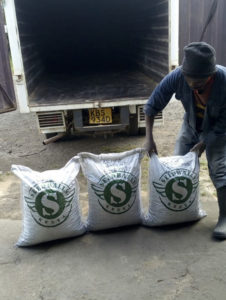 MEP also received a donation of 100 kg of seedballs (pictured left) from Seedballs Kenya thanks to Explorers Against Extinction. This donation included over 50,000 Olea africana (olorien) seedballs for MEP to distribute around degraded forests in Narok County. Wildlife photographer James Lewin supported Mara Elephant Project in May by donating 20% of the proceeds from the sale of his print Instinct. This work, alongside others, are available at Isabella Garrucho Fine Art in the U.S. and Cricket Fine Art in the UK. This photo was taken in the Maasai Mara in 2020. Thank you to James for supporting MEP’s work. Thank you to long-time supporter of MEP, Lori Price for donating over $81,000 in support of the Loita ranger units in 2021. Thank you to Robert Isackson, Tom Lyons, Jane Wylie, Glynis Burgdorff, Dan Kimbrough, Elise Kline, Linda Quest, Lucy Schott and Mary Vero for your donations in April to MEP. Thank you to Peter for raising money for MEP on Facebook to celebrate his birthday, we had $270 in donations in April and thank you to all of the photographers for supporting MEP in the Greatest Maasai Mara photo competition in May.
MEP also received a donation of 100 kg of seedballs (pictured left) from Seedballs Kenya thanks to Explorers Against Extinction. This donation included over 50,000 Olea africana (olorien) seedballs for MEP to distribute around degraded forests in Narok County. Wildlife photographer James Lewin supported Mara Elephant Project in May by donating 20% of the proceeds from the sale of his print Instinct. This work, alongside others, are available at Isabella Garrucho Fine Art in the U.S. and Cricket Fine Art in the UK. This photo was taken in the Maasai Mara in 2020. Thank you to James for supporting MEP’s work. Thank you to long-time supporter of MEP, Lori Price for donating over $81,000 in support of the Loita ranger units in 2021. Thank you to Robert Isackson, Tom Lyons, Jane Wylie, Glynis Burgdorff, Dan Kimbrough, Elise Kline, Linda Quest, Lucy Schott and Mary Vero for your donations in April to MEP. Thank you to Peter for raising money for MEP on Facebook to celebrate his birthday, we had $270 in donations in April and thank you to all of the photographers for supporting MEP in the Greatest Maasai Mara photo competition in May.
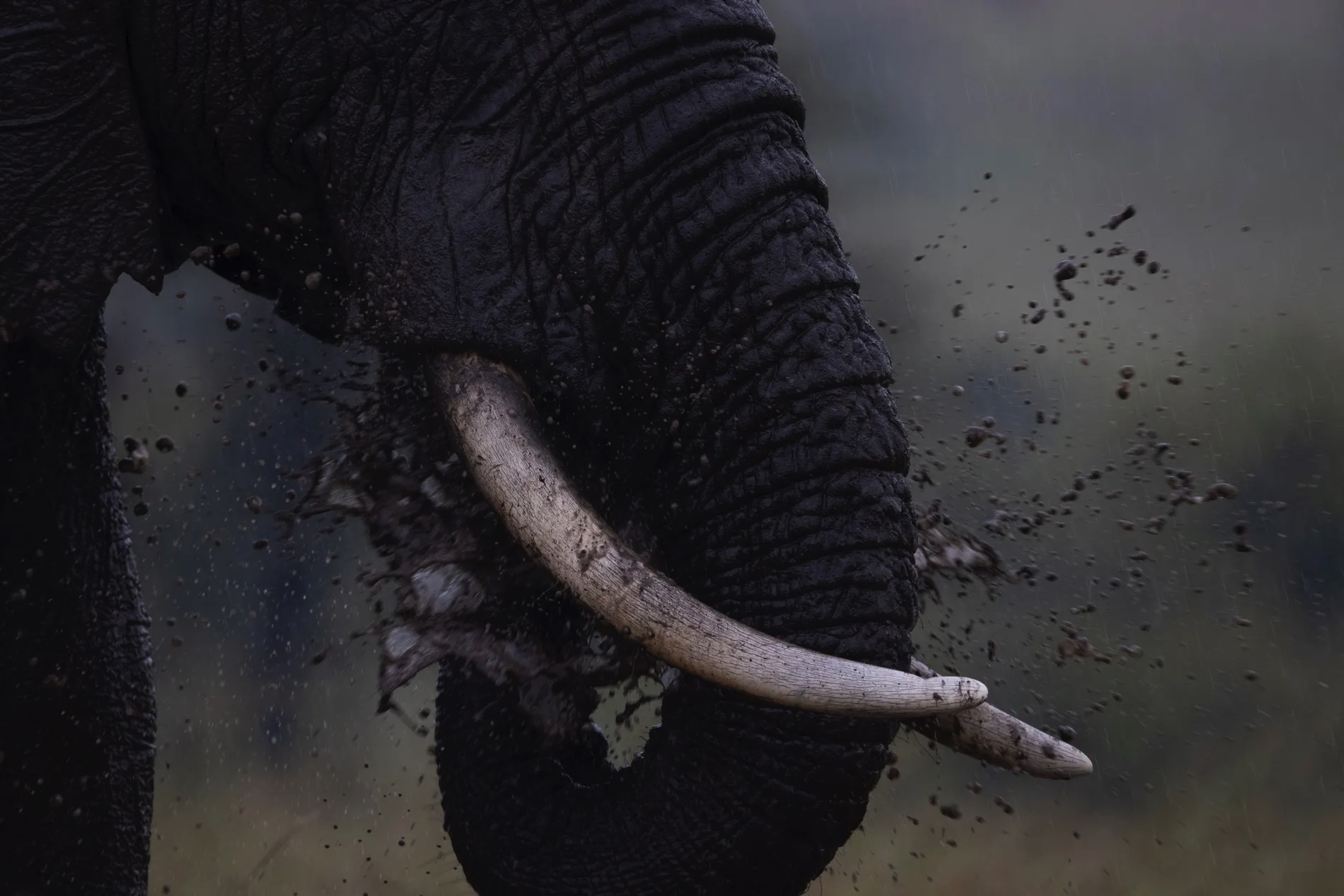
An April entry by Laura Dyer.


